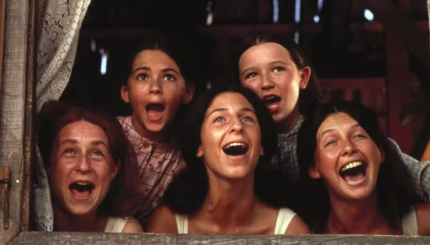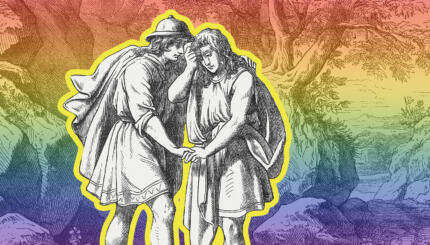A month after its publication, the “Statement on Jewish Vitality,” signed by a number of leading Jewish communal figures, has stirred robust and vociferous condemnation. Some, like my colleague and neighbor Rabbi Rona Shapiro, have argued that the Statement is too technically-oriented, focusing on a series of steps to expand “Pediatric Judaism” programmatically but doing little to address the burning need to make Judaism a conduit of contemporary meaning and substance. As another critique, by Rabbis Rami Shapiro and Robert Barr, puts it:
The concern of leadership is with numbers when it should be about meaning. Focusing on numbers is a bit of sleight of hand, it diverts the reader’s attention from a deeper reality. Jews aren’t disappearing – they simply no longer find current Jewish institutions of value. They have voted with their feet not with their hearts. But rather than acknowledging that Judaism isn’t speaking to most Jews, the establishment simply doubles down on what already exists rather than creating something genuinely new and relevant.
Others have rejected the premise of the “Statement” that the Jewish community is in crisis at all. A response by the Lippman Kanfer Foundation for Living Torah says:
Fundamentally, we disagree with the premise that American Jewry is in crisis and that the key issue facing the community is the “shrinking ‘Middle.’” Rather, we see American Jewish life today as diverse and dynamic, with cross-cutting trends and a richness and complexity that survey statistics simply cannot capture.
Similarly, a recent response by a collection of Jewish social justice organizations argues: “We do not accept this doom and gloom picture of a dying Jewish community, and we think the analysis and recommendations in the document are too limited.”
So who is right? The luminaries — rabbis in the field and leading scholars of Jewish sociology — who suggest there is a crisis and a need for a strategic response? Or those who have rejected the “Statement” as being too myopic and anachronistic, missing out on the vital Jewish experience currently taking place, to borrow from last week’s Torah portion, Vayera, if only our Hagar-like Jewish establishment would open its eyes?
The truth is that both perspectives reflect deep truths about contemporary Judaism, but that each could learn a lot, and be far more impactful, if we are willing to listen to one another. Jewish life in 21st-century America is the best of times and the worst of times. Technology has democratized access to Jewish wisdom and practice and prompted a dazzling panoply of opportunities for people to engage Jewishly without needing to invest lots of time or money. Jewish social justice organizations have brought new generations of Jews a sense of connection with Judaism that they never felt from their synagogue exposure (or lack thereof) or other Jewish establishment organizations. So, too, have the recent proliferation of JOFEE (Jewish Outdoor, Food and Environmental Education) organizations, led by Hazon. Independent minyanim, sparked by Mechon Hadar and other venues, have created a platform for empowering young Jewish adults with the tools and vision to take ownership of their prayer experiences.
At the same time, the Pew Study does not lie, and its findings must be reckoned with. When 62 percent of Jews say being Jewish is mainly a matter of ancestry and culture, while just 15 percent say it is mainly a matter of religion, as the Pew Study found, the future of non-Orthodox Jewish religious life is in crisis. This is especially so outside of large urban centers, where both resources and general Jewish literacy are scarce. If you don’t believe the Jewish “Middle” is shrinking and suffering (especially the Conservative Movement, to which I belong), I encourage you to walk into a Conservative in suburbia on a non-Bar Mitzvah Saturday morning, or a Sunday morning religious school class, or an adult education program. The crisis is real and profound, and if we value the ongoing existence of a Jewish Middle in America, radical change must occur.
I personally believe that what is needed is a combination of the approaches outlined by the “Statement” and those that have critiqued it. Yes, we do need to do more to encourage an increase in Jewish reproduction, whether this means greater emphasis on conversion of non-Jewish spouses or funding for Jewish daycare and schooling. We also need to focus more robustly on post-Bar/Bat Mitzvah through 20s engagement, where the Jewish return on investment has been proven by the academic literature. But, in conjunction with this strategic allocation of resources, we need to speak openly and passionately about what makes the Jewish community worth preserving. We should focus, as Rabbi Shapiro challenges us, on finding more ways to provide Jewish intimacy, choice, authenticity, creativity, moral courage, sacred purpose, and Ahavat Yisrael (love of the Jewish People).
Finally, the Jewish community (or more accurately, our multiple Jewish communities since we are not monolithic) must hold candid conversations about whether we want to prioritize a Judaism where Jews identify culturally or morally but not necessarily religiously. The Pew Study makes clear that this is the reality for the vast majority of non-Orthodox Jews in America. But this is NOT a new conversation, despite what demographers might claim. It is the same conversation that is captured in the Book of Nehemiah; the same conversation that led to the Jewish civil war commonly known as Hanukkah; the same conversation that occurred during the Golden Age of Spanish Jewry; and the same conversation that took place in the wake of German Jewish emancipation. But it is a conversation we need to have, candidly and without acrimony. Our future depends on it.
When is Hanukkah 2015? Click here to find out!
Hanukkah
Pronounced: KHAH-nuh-kah, also ha-new-KAH, an eight-day festival commemorating the Maccabees' victory over the Greeks and subsequent rededication of the temple. Falls in the Hebrew month of Kislev, which usually corresponds with December.



